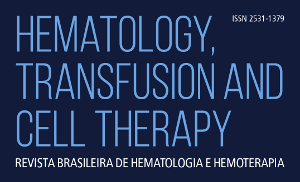Abstract
Introduction
Febrile neutropenia (FN) is a serious complication of cancer chemotherapy. The present study aimed to identify risk factors for documented infection in pediatric patients with FN and cancer.
Methods
This prospective cohort study included patients under 18 years from 2016 to 2018. Infection was defined according to the Centers for Disease Control and Prevention criteria.
Results
A total of 172 febrile neutropenic episodes were evaluated. From univariate analysis, the risk factors were: female gender; monocyte count < 100 cell/mm³, platelets < 50,000, C-reactive protein (CRP) > 90 mg/dl and hemoglobin < 7mg/dl at the onset of an episode; two or more episodes of FN, and; fever onset; positive blood culture at the fever onset. Independent risk factors according to the multivariate analysis were: CRP at the onset of a febrile episode > 90mg/dl, fever onset and first blood culture with a positive result. The lowest probability of infection was related to first episode and to platelets > 50,000 at the onset of fever.
Conclusion
A CRP > 90 at the onset of a febrile episode, platelets < 50,000, second episode or more, first fever episode during hospitalization and positive first blood culture were found to be associated with a higher risk of infection and they could be useful for the establishment of risk scores for infection in neutropenic children.
Keywords
Febrile neutropenia; Risk factor; Bacteremia; Cancer; Chemotherapy
